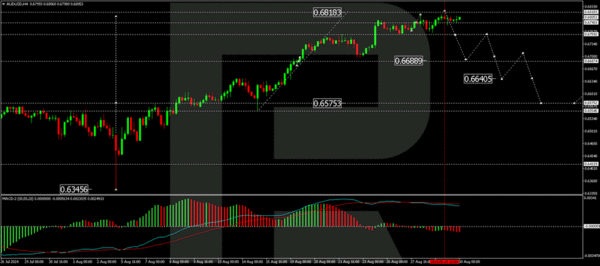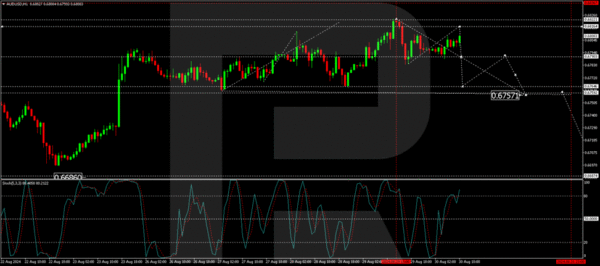The AUD/USD pair shows signs of potential resurgence as it trades near 0.6802, consolidating within a sideways range at its local peaks towards the end of August. The Australian dollar has appreciated by almost 4% over the month, bolstered by high consumer price index figures that underline persistent inflationary pressures in Australia.
In July, Australian inflation was recorded at 3.5% year-over-year, slightly decelerating from June’s figures but still surpassing expectations of 3.4%. This has supported the Reserve Bank of Australia’s (RBA) decision to maintain a tight monetary policy stance. Despite the challenges in effectively curbing high inflation, the RBA has adopted a watchful rather than aggressive approach, which could yield favourable outcomes over a longer horizon.
During the last RBA meeting, discussions were held regarding a potential rate hike, though it was ultimately decided to keep rates unchanged. The RBA’s cautious approach, combined with the earlier general weakness of the US dollar, has provided a solid backdrop for the Australian dollar’s strength.
AUD/USD technical analysis
On the H4 chart, AUD/USD recently completed an upward wave to 0.6822, followed by a downward impulse to 0.6784. Currently, a corrective movement to 0.6816 is anticipated, potentially establishing the upper limits of the consolidation range. A downward exit from this range could initiate a new decline to 0.6760. A break below this level might signal the start of a new downward trend towards 0.6640, with a potential continuation to 0.6575. The MACD indicator supports this bearish scenario, with its signal line at the highs and trending downward.
On the H1 chart, the pair is forming a correction to 0.6816. Following this correction, a downward movement to 0.6764 is expected, potentially extending to 0.6757. The Stochastic oscillator, currently above 80, indicates a likely decline to 20, supporting the possibility of continued downward momentum after the correction.














